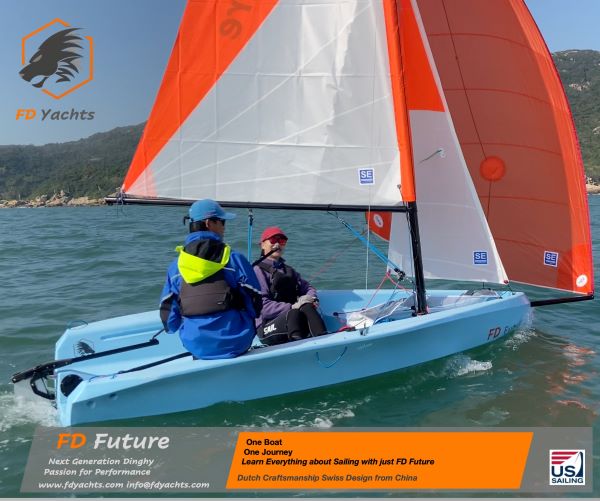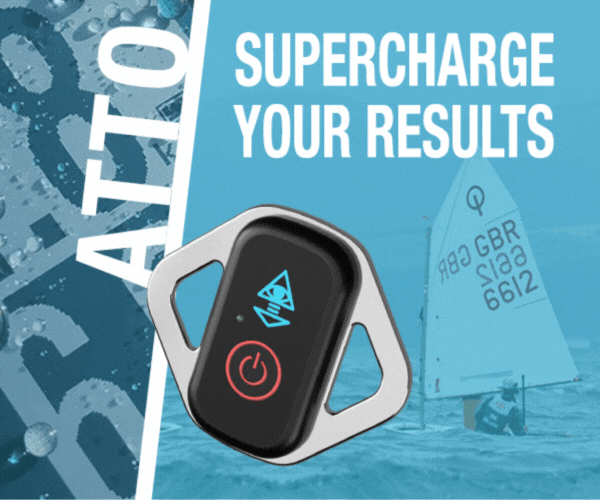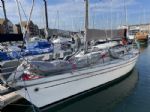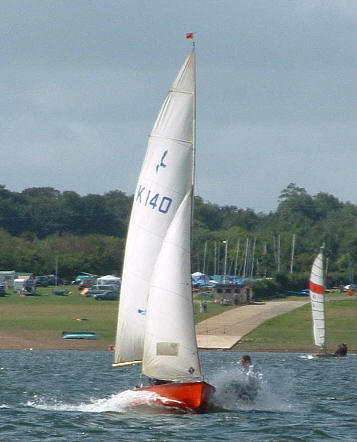












| Laser 28 - Excellent example of this great design Hamble le rice |
 |
| Rossiter Pintail Mortagne sur Gironde, near Bordeaux |
 |
List classes of boat for sale |
Proper Course |
Post Reply 
|
Page <1 3456> |
| Author | |||||
sargesail 
Really should get out more 
Joined: 14 Jan 06 Location: United Kingdom Online Status: Offline Posts: 1459 |
 Post Options Post Options
 Quote Quote  Reply Reply
 Topic: Proper Course Topic: Proper CoursePosted: 04 Dec 13 at 1:29pm |
||||
|
You don't need and Appeal or a Case to tell you that. The language is clear and unambiguous.
The rules aren't restricted in that way at all. As the Americans say 'don't put things into the rules that aren't there' If you want to have a useful discussion about the rules, please try to use the language of the rules, not some paraphrase of your own. There's nothing in rule 17 about 'the other boat affecting you' or 'altering course'. [/QUOTE] Brass - to me it's you that is adding something not us.....you are extending 'the boat' to be the boat and it's wind shadow. |
|||||
 |
|||||
sargesail 
Really should get out more 
Joined: 14 Jan 06 Location: United Kingdom Online Status: Offline Posts: 1459 |
 Post Options Post Options
 Quote Quote  Reply Reply
 Posted: 04 Dec 13 at 1:37pm Posted: 04 Dec 13 at 1:37pm |
||||
|
Brass - shame you focussed on the easy target - tactical reasons and not the very good example given.
Sorry, absolutely NOT. A boat's proper course is what the Definition says it is A
course a boat would sail to finish as soon as possible in the absence of the
other boats referred to in the rule using the term. So let's just say that there is a wave (nothing to do with W - some chump umpiring another race and driving too fast?), which slows L, bounces the kite, and that the response is to head up. You surely accept that from the moment the boat slowed it's proper course changed? Because your earlier call book example seemed to make proper course an enduring thing, but actually it changes moment by moment as the conditions change. Taking that on - what if the trimmer over eases the sheet and the boat slows, before L enters the windshadow....At that point the course that meets teh defintion includes hardening up to bring the apparent forward.
I would argue that it's still sailing it's proper course as
it's still just trying to sail to polars with respect to the wind hitting the
boat, . How do you account for this? |
|||||
 |
|||||
JimC 
Really should get out more 

Joined: 17 May 04 Location: United Kingdom Online Status: Offline Posts: 6661 |
 Post Options Post Options
 Quote Quote  Reply Reply
 Posted: 04 Dec 13 at 1:46pm Posted: 04 Dec 13 at 1:46pm |
||||
|
If the boat is there then its wind shadow is there.
If the boat is not there its wind shadow is not there. The rule says the absence of the boat. If the boat is absent the wind shadow is absent. |
|||||
 |
|||||
jeffers 
Really should get out more 

Joined: 29 Mar 04 Location: United Kingdom Online Status: Offline Posts: 3048 |
 Post Options Post Options
 Quote Quote  Reply Reply
 Posted: 04 Dec 13 at 1:49pm Posted: 04 Dec 13 at 1:49pm |
||||
|
Ok let us break this down again....in to even simpler terms.
If Flaming is Clear Ahead or Clear Astern they can luff up to fill the spinnaker as they are not bound by the Proper Course restriction. If Flaming was overlapped when they entered the wind shadow they may only luff of to their proper course as the overlap was established from astern. Is that clear enough? So the questions to Flaming are: 1) Were you overlapped when you luffed up? 2) If yes to number 1 did you luff above the course you would have luffed if your wind was not affect by the other boat? If the answer to both is yes then you sailed above your proper course IMO. It would be interesting to see the Facts Found by the PC as this is what they would have based their decision on. Anyway.....that is enough entertainment for today, lets go sailing?
|
|||||
|
Paul
---------------------- D-Zero GBR 74 |
|||||
 |
|||||
flaming 
Groupie 
Joined: 04 Oct 11 Online Status: Offline Posts: 41 |
 Post Options Post Options
 Quote Quote  Reply Reply
 Posted: 04 Dec 13 at 2:17pm Posted: 04 Dec 13 at 2:17pm |
||||
This wasn't a pertinent issue to the recent protest, the facts found simply state "no evidence to suggest X sailed above her proper course" Which was rather expected given the GPS track.
There's no issue at all with the understanding of how 17 works. My question is simple - when constrained by 17 can I luff to my proper (VMG) course for the wind as I experience it in the wind shadow of the windward boat? Which seems to come down to "is the wind shadow part of the boat as referred to in rule 17?"
|
|||||
 |
|||||
rogerd 
Really should get out more 

Joined: 25 May 04 Online Status: Offline Posts: 1076 |
 Post Options Post Options
 Quote Quote  Reply Reply
 Posted: 04 Dec 13 at 3:24pm Posted: 04 Dec 13 at 3:24pm |
||||
|
Interesting discussion guys. Keep it going. I am no sea lawyer but I am with Jim C and Brass on this. The wind shadow would not have been there if the W boat wasn't there so luffing up to fill your kite would be above what your proper course would have been if the W boat and hence its wind shadow wasn't there.
|
|||||
 |
|||||
jeffers 
Really should get out more 

Joined: 29 Mar 04 Location: United Kingdom Online Status: Offline Posts: 3048 |
 Post Options Post Options
 Quote Quote  Reply Reply
 Posted: 04 Dec 13 at 3:58pm Posted: 04 Dec 13 at 3:58pm |
||||
No because that is not your proper course as defined in the definitions section of the rules.
Edited by jeffers - 04 Dec 13 at 4:06pm |
|||||
|
Paul
---------------------- D-Zero GBR 74 |
|||||
 |
|||||
andymck 
Far too distracted from work 
Joined: 15 Dec 06 Location: Stamford Online Status: Offline Posts: 397 |
 Post Options Post Options
 Quote Quote  Reply Reply
 Posted: 04 Dec 13 at 4:49pm Posted: 04 Dec 13 at 4:49pm |
||||
|
The wind shadow is clearly part of the boat. It has always been part of the rule. It can not be argued to exist in the absence of the boat that creates it.
This was never an issue until the use of assymetrics on displacement boats. We then started to hear the argument that rule 17 does not apply to me because I am an assymetric. I often used to give a copy of the rules to such skippers and ask them where in the book that exception was? The bottom line is this argument was just as invalid for assymetrics boats as it was for all other types of boat. The crux would be to look at the course before and immediately after, the Classic was the head low, hit the shadow, luff hard, then head low again. Quite clearly the luff was only there because of the windward boat. The bottom line is that the winners will keep well clear, on either side so they don't get luffed if they go to windward, or sail low enough to break through with minimum fuss. Brass has this one spot on. There does not need to be a case, as the rules a very clear, and confusion only occurs when people try to add their own definitions or aww buts. Andy |
|||||
|
Andy Mck
|
|||||
 |
|||||
Brass 
Really should get out more 
Joined: 24 Mar 08 Location: Australia Online Status: Offline Posts: 1151 |
 Post Options Post Options
 Quote Quote  Reply Reply
 Posted: 04 Dec 13 at 6:16pm Posted: 04 Dec 13 at 6:16pm |
||||
Guys, I have never said the wind shadow is part of the other boat. That would be plain silly. JimC has it
The wind shadow only exists because of the other boat. It would not exist in the absence of the other boat. Try this: IF The windward boat casts a [significant] wind shadow AND The leeward boat bound by rule 17, and previously sailing her proper course, sails into that wind shadow AND The leeward boat changes course to windward to respond to the lessening of wind in the wind shadow (and not any change in the prevailing wind) THEN The leeward boat has sailed above the course she would sail to finish as soon as possible, had the windward boat not been there (in the absence of the windward boat), that is, has sailed above her proper course.
|
|||||
 |
|||||
Brass 
Really should get out more 
Joined: 24 Mar 08 Location: Australia Online Status: Offline Posts: 1151 |
 Post Options Post Options
 Quote Quote  Reply Reply
 Posted: 04 Dec 13 at 6:43pm Posted: 04 Dec 13 at 6:43pm |
||||
Edited by Brass - 04 Dec 13 at 8:35pm |
|||||
 |
|||||
Post Reply 
|
Page <1 3456> |
| Forum Jump | Forum Permissions  You cannot post new topics in this forum You cannot reply to topics in this forum You cannot delete your posts in this forum You cannot edit your posts in this forum You cannot create polls in this forum You cannot vote in polls in this forum |
Copyright ©2001-2010 Web Wiz
Change your personal settings, or read our privacy policy











 Printable Version
Printable Version Delicious
Delicious Digg
Digg Facebook
Facebook Furl
Furl Google
Google MySpace
MySpace Newsvine
Newsvine reddit
reddit StumbleUpon
StumbleUpon Twitter
Twitter Windows Live
Windows Live Yahoo Bookmarks
Yahoo Bookmarks Topic Options
Topic Options